PS/SPS User Meeting
Minutes of Meeting
The template for the minutes of meeting for the weekly PS & SPS users meeting can always be found using this link: https://codimd.web.cern.ch/0aHs5uqmSPuII76-SaaQdg
Please pre-fill them before the meeting with a summery of your activities!
PS-SPS Users Meeting for Week 33 held on August 15th, 2024
- September 4th: User meeting exceptionally on Wednesday on zoom only (05.09 is CERN holiday).
- Updated user schedule v3.2.0.
- Please get in contact, if you want to take one of the weeks without assigned main user - Tanja (tetiana.shulha@cern.ch) is collecting all requests.
News from the PS & SPS Physics Coordinator
E.B. Holzer, M.R. Jäkel
- 2024 injector schedule released EDMS 2872566
2024 approved LHC schedule EDMS 2872429
Proton Run 2024
- AD/ELENA Physics Stop Monday 02.12.2024
- SPS NA Physics Stop protons Thursday 31.10.2024
- PS EA Physics Stop protons Wednesday 27.11.2024
Ion Run 2024
- SPS NA Physics Start 4.11.2024 (maybe earlier if set-up is fast) - Stop Pb ions Monday 2.12.2024 (6h)
- NA : Week 45-47 high energy
- NA : Week 48 low energy (no LHC running)
- PS EA Physics Start 6.11.2024 (tbd) - Stop Pb ions Monday 2.12.2024 (6h)
- CHIMERA: 13.11-2.12
Reminder: Beam time exceeding the limits of 2 weeks PS beam time and 1 week SPS beam time per year need the approval of one of these CERN committees: SPSC, LHCC, DRDC, INTC, RB or IEFC. Consider joining a DRD collaboration, if you require more beam time.
News from the Facilities Operations Meeting (FOM) (E.B. Holzer)
Target intensities:
- August 2nd to 12th: 45 units on T10 (85 units on T4)
- had to reduce the POT due to radiation alarms
- August 12th: reduce again to 21 units on T10 (about 42 units on T4)
- T2: 30 units
- T6: 30 units
Upcoming SPS MDs next weeks :
https://be-dep-ea.web.cern.ch/content/md-planning-north-area
Dedicated SPS MDs - if not anounced differently - are taking place from 8:00 to 18:00
- No dedicated MDs for week 33, 34 and 38
- week 34 Monday to Friday: LHC MD
- August 8 and 9 daytime: preparing the cycles for LHC MD next week - reduced duty cycle for North Area
- reduced duty cycle for the North Area (in particular up to and including the nigth of Tuesday)
- possibly problems with the spill quality
- Dedicated SPS MD week 35: Beam to P42 - no access to ECN3
- Dedicated MS week 36, 37 and 39: most likely no access to ECN3
PS Machine Report (R. Garcia Alia)
- Main beam activities:
- double TOF prepared at 2x800E10, with 44ns and 49 ns bunch lengths
- nTOF 44ns: reduction of PS and extraction losses (mainly thanks to high-energy orbit correction)
- Significant work in relation to transfer line optics
- EAST beams needed resteering as a result of the 28 --> 44ns nTOF change
- High-intensity run (still below the 220e10 p/s limit, of course) to start this afternoon
- MTE intensity increased to almost 1E13
- Main issues:
- Thu-to-Thu availability: almost 98%
- BPM/ALPS phasing problem in TT2 with meaningless trajectories for some of the TOF beams (making it more challenging to set up the beams)
- KFA71 issue: 6 modules in fault for ~3h on Tue-Wed night due to cooling oil pump issue
SPS Machine Report (Pablo Arrutia)
Availabilities (Thu-Thu)
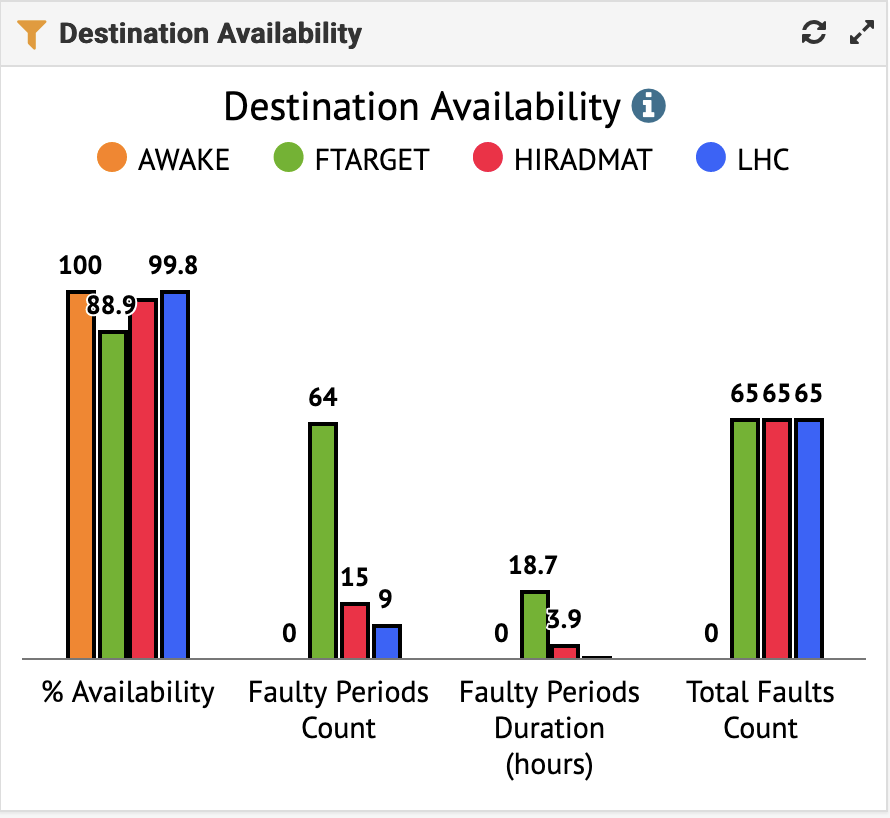
- HiRadMat: Run completed yesterday afternoon
- NA: Increased intensity in T2 to 50 units by request of BE-EA. Goal is to check if this different splitting ratio helps with losses in T4.
- LHC MDs: started testing of beams today due to demanding “menu”. Thanks for flexibility.
Issues:
- Tues: MKP kicker failure (downtime ~7h)
- Wed: Unauthorised trim of RF cavity phase (NA degraded beam, ~7h)
Safety (J. Devine)
Thank you for following the HSE guidance on shorts! We haven’t found anyone recently in shorts in the beamline zones, which is very good.
Also thank you for updating us as to any delays with your setups, this is very helpful and has worked well this week.
General notice: are you going to be working with magnetic fields? If so please consider the following training courses:
Magnetic Field Awareness - online. This is an online course, very easy to complete and covers the basics of working safely with a magnetic field. This is the minimum for test beam teams working with magnetic fields as part of their experiment.
Magnetic Fields - classroom session. This is an excellent in person course covering the technical and safety aspects of working in a magnetic field. There are only a few sessions per year, so add yourself to the waitlist now if you plan to work with strong magnetic fields in the future. The Magnetic Field Awareness course is a pre-requisite.
nToF (Michael BACAK and Paolo M MILAZZO)
Smooth data taking in all experimental areas.
A large amount of work has been done by the PS staff on TOF beams to provide more protons for the incoming run on the 88Zr radioactive sample.
EAR1: 63Cu(n, g) measurement has been completed and the 238(n, g) campaign has started, no changes needed in the experimental set-up.
EAR2: Auxiliary measurements for the 88Zr(n. g) campaign have been performed; today the sample is arriving from PSI and will be directly put on beam.
NEAR: Activation measurements
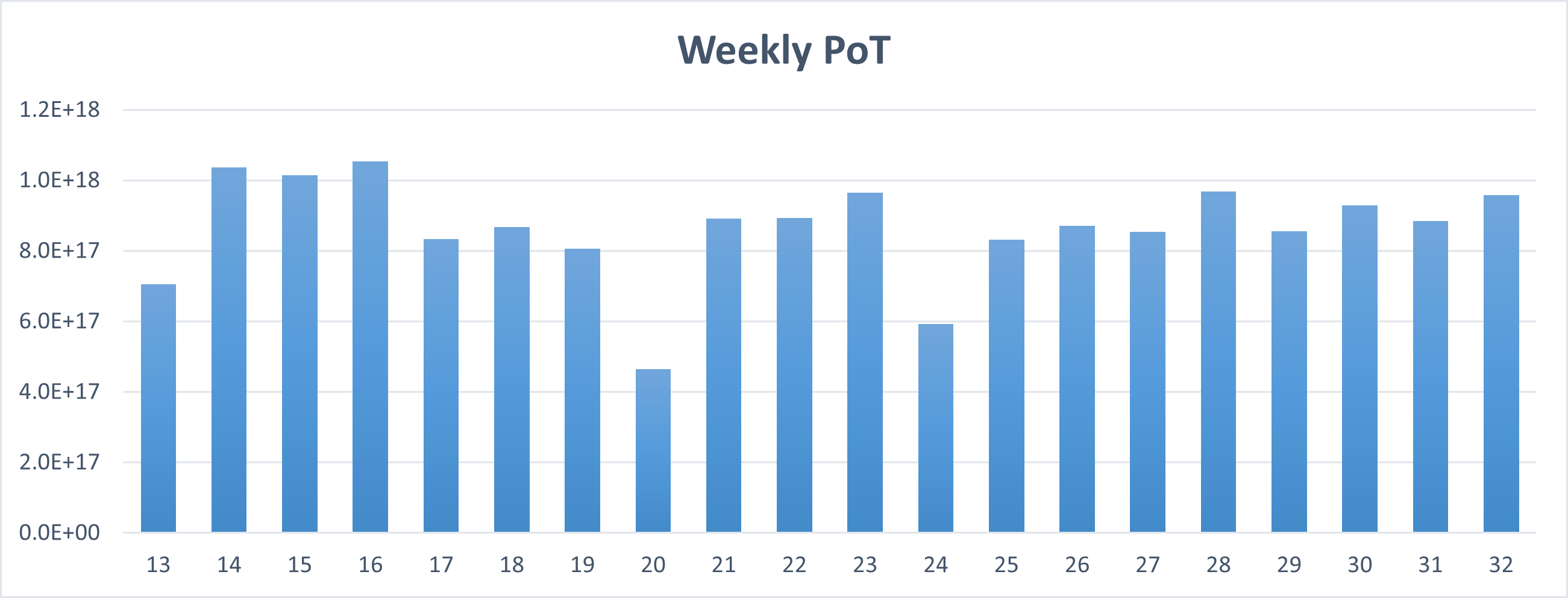
Protons received in standard conditions
East Area Beam Status (B. Rae)
On call number: 67500
CESAR-LSA deployment for T10 and T08 planned for Week 35, August 28th.
T09: Good operation. WCTE assembly also progressing well on schedule.
T10: Good operation.
T11: Quite a few issues with a new version of CESAR deployed for T11. Beam files could not be loaded or saved. Problems were caused by using a mix of CESAR versions as well as some unexpected problems with the login via location that were not seen during the testing phase. About 2 hours of interruption during start of P349. After this, good operation.
East Area Users Tour de Table
T8 Main: IRRAD/CHARM (F. Ravotti)
Again very good week in T8, protons reached ~2.8E16 as in the previous weeks and TID in CHARM reached specification level (500 Gy).

T8 transmission very good and beam alignmet (% of spills within +/- 2mm from the center) above 96-97% on both axis.

In IRRAD we are continuing with long-term experiments only (TE-MSC, EN-MME, etc.) - no user/samples exchange yesterday.
In CHARM, yesterday the ATLAS setup was removed, new user in the rack installed (SY-RF) for long term exposure. CMS and BE-CEM-EPR setup continue.
T9 Outgoing Main: STCF ECAL&PID (Yunlong Zhang)
Firstly, thank all the CERN help. expecially, Dipanwita, Aboubakr, Alex, Anastazja…
In the past two weeks, we have collected about 30,000,000 events.
Muons, which were uesde to calibrate dtetectors, about 3.5 M events.
Positron, were used to calibrate crystal calorimeter, about 15 M events.
pions/Protons, were used to test PID detector, about 13 M events.
pure CsI calorimeter, 1 GeV positron, the energy resolution is about 2.5%, very good! The T9 beam momentum resolution is excelent.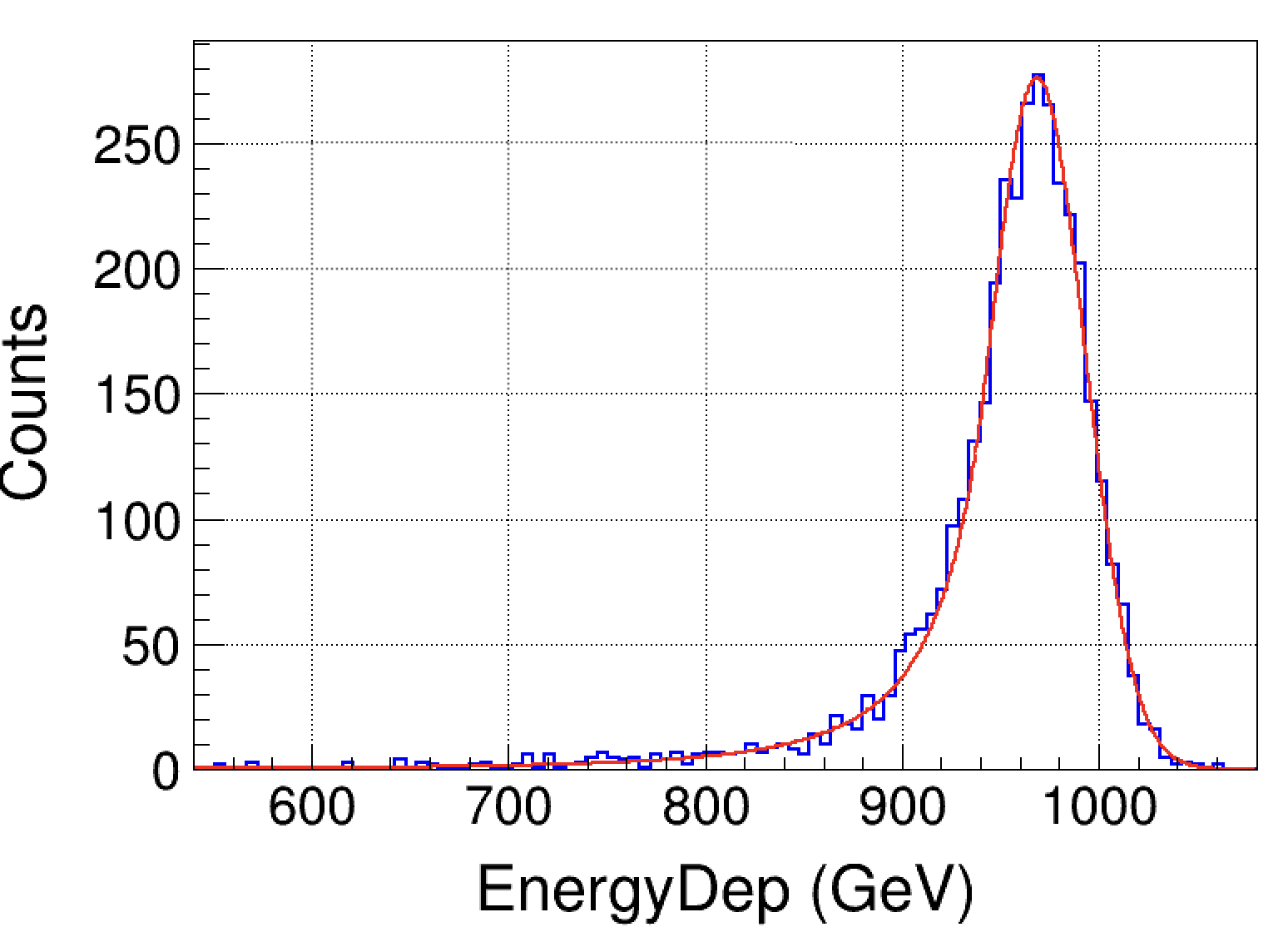
PID detetcor, 3 GeV/c pion/proton mix beam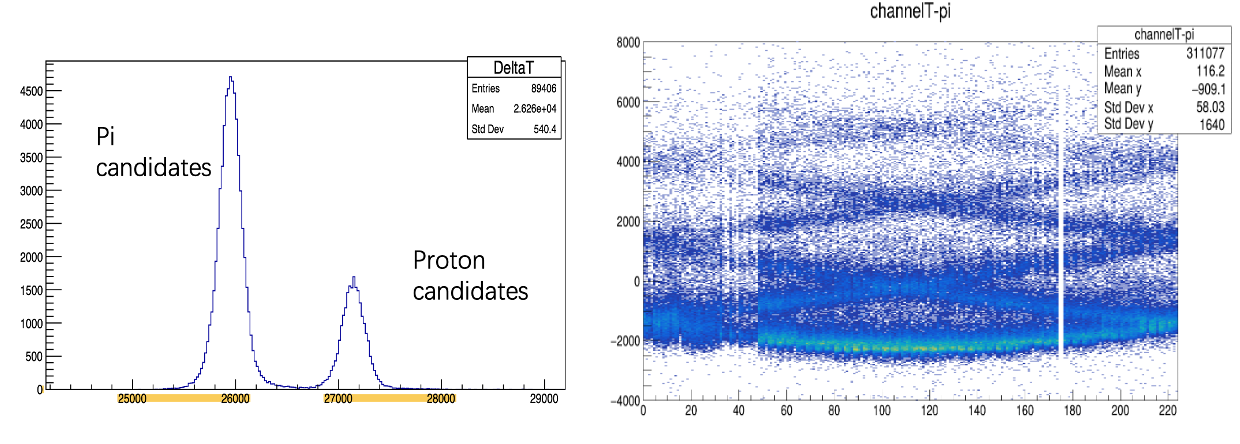
The detectors were parcked. The detailed analysis will be conducted later.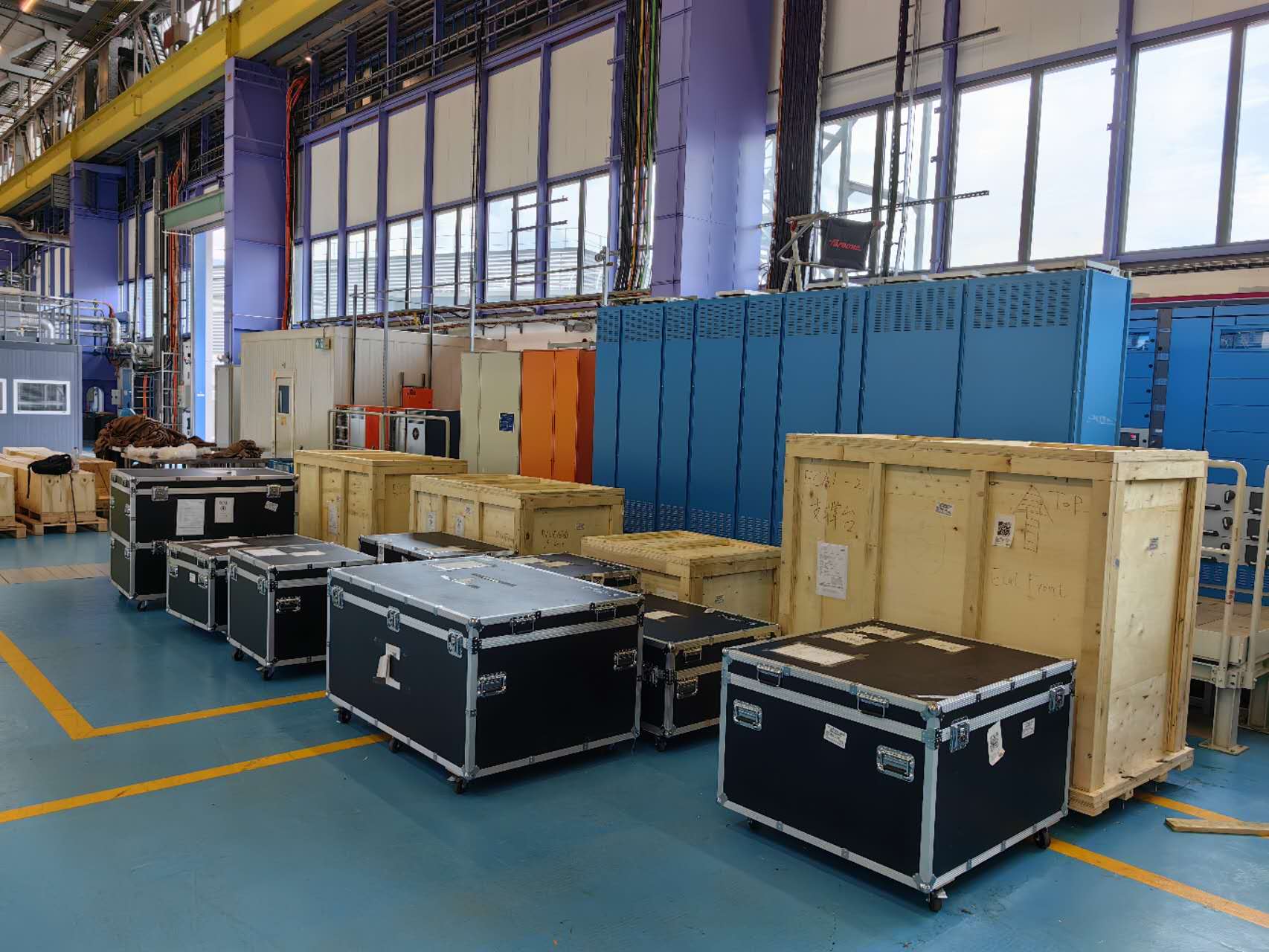
T9 Main: NP06 ENUBET (Andrea Longhin)
Transportation, handling, logistics: a big thank you to the logistics team for help with the installation and for having the detector quickly transferred from Prevessins yesterday despite some flaws in the original EDH request.
Installation: The detector installation is almost finalized. We plan to complete it this morning. Safety visit is planned for today @ 16.00
Setup is similar to last year but with:
- An upgraded DAQ with optical link board synchronization
- A more compact and elegant darkening box
- PICOSEC MicroMegas test for hadron dump instrumentation (this will come towards the end of the test – more news next week)
Plans: Run with mixed beam (hadrons, muons, electrons) and “pure” electrons settings. No change wrt last year. We can use the same magnet configurations. Test uniformity, energy resolution, particle identification, effect of beam tilt.
Final remark: it is quite hard to work in T9 due to the high temperature (~30 oC) and humidity (helmets, long trousers), maybe it is exceptional but is there any possibility to improve this ?
T10 Outgoing Main: EIC BARREL ECAL (Jeongsu Bok)
- Successful test: calibration, energy scan 0.5,1,2,3 GeV/c done for the first prototype of EIC BCal from Korean group.
- SiPM module test.
- We plan another test next time.
- Appreciate your support. We are very happy.
T10 Main: ALICE TOF (Yongwook Baek)
- Setup done
- Gas circulating
- Clearance done
- taking data
T10 Incoming Main: ALICE ITS3 (Week 34) (Paolo Martinengo)
(Almost) Ready to take the beam, DESY 4 needed
T10 Incoming Parallel: ALICE FOCAL (Week 34) (Please Put Your Name Here)
T11 Main + Incoming No beam: P349 (Dieter Grzonka + Vincent + Huagen)
- Monday + Tuesday: setup to full operation
- Wednesday: find beam with scintillator pads and first data taken

North Area Beam Status (B. Rae)
On call number: 67500
MD Access
https://be-dep-ea.web.cern.ch/content/md-planning-north-area
Target intensities
| T2 | T4 | T10 | T6 | Date/Comment |
|---|---|---|---|---|
| 30 | 100 | 55 | 30 | original plan as of last week |
| 30 | 85 | 45 | 30 | adapted due to higher radiation last Friday |
| 50 | 85 | 45 | 30 | further adaption yesterday to reduce beam size in P42 |
| 30 | 54 | 21 | 30 | planned from Monday 12.08. |
H2: Smooth operation.
H4: Smooth operation.
H6: Generally good operation. Quad 426 tripped a few times but comes back quickly. We’re monitoring it but there is no obvious fault.
H8: Mostly good operation, some magnet trips over the weekend likely due to heat. Access matrix changed to add PPE168 to PPE158 for the next weeks, until XTDV.042.572 can be repaired (27-28 August). Many thanks to DRD6 IDEA DRC for allowing time for this.
M2: The 2nd MBPL for NA64mu had some cooling issue and is currently limited to 740 A as opposed to 800 A. Different energy hadron files and the 160 GeV/c muon file have been checked.
P42/K12: Elevated dose rates observed at the bridge towards TCC8/ECN3 led to a decrease of the P42 intensity (and with it T4) last Friday. Due to the sharing, the beam size in P42 was vertically larger than it used to be. After discussions with HSE-RP, we proposed to increase the intensity on T2, thus reducing the beam size in P42. Since yesterday, radiation levels are ok for the current intensity. We had a few interlocks due to Bend 2 of K12, so we changed the tolerance in p0survey slightly and the experts will have a look on the power supply.
HIRADMAT (N. Charitonidis)
HRMT-65 experiment completed yesterday, thank you to all people involved !
North Area Users Tour de Table
P42-K12:
NA62 (B. Velghe)
- We are running in dump mode until Monday 19th. About 42 units on T10.
- The experiment is running very well, no downtime to report.

- A few occurrences of the P42 TAX closing unexpectedly (P0 survey, BEND.101.033 current fluctuation), quickly caught up by the shifters.
- Switching back to kaon on Monday with 21 units on T10 (nominal condition for this year).
M2:
Main: NA64mu (L. Molina Bueno)
We continue data taking. Main issue with MS2 magnet last tuesday and last weekend again.
H2:
Outgoing Main: CMS HF (Alexi Mestvirishvili)
Very smooth operation during all the time, very small (no more than an hour) downtime due to NO BEAM condition
Excelent support from SPS team (Nikos)
Goals acomplished, the test beam program was completed to the end
Main: TECHNO CLS (Laura Bandiera)
- Setup of Beampipes, magnets and movable platform with SPS staff support done yesterday. Thanks a lot to M. Lazzeroni, S. Girod and staff.
- Experimental setup: Part of our setup is already mounted and working. we will finish the mounting early today after the finalization of electron/positron beam setting
- Beam setting: the 20 GeV beam is ok (thanks Nikos). The 120 GeV e-beam has two-peaks structure. Nikos worked on it just before the user meeting.
H4:
Main: NP04 (Christos Touramanis)
- Taking beam smoothly. So far recorded in excess of 15 million beam triggers.
- TPC running very well.
- DAQ very stable. Usually runs go for >24 hours uninterupted. In a single run over last weekend we collected >2M events in 36 hours with no shifter intervention.
- Yesterday did Cherenkov scans for both low and high pressure Cherenkovs with positive and negative beams at 5 GeV. Cherenkov efficiency >99% for both, particle content matches MC predictions at the percent level. We want to express our sincere appreciation to our BE colleagues, Nikos and Inaki and their teams for this excellent performance!
- We formally request the two available weeks of beam from September 4th.
H6:
Main: ATLAS HGTD (Stefano Manzoni)
Our test beam has been running fairly smoothly since last Friday, except for some problems with a quadrupole failing two or three times in H6 (thank you to Laurie for quickly help us with it)
Yesterday we changed the DUT and started testing our latest version of ASIC (ALTIROCA) for the first time.We will keep testing it for a few more days and then move on to irradiated samples.
Incoming Main: ATLAS ITK PIXEL (Please Put Your Name Here)
H8:
Outgoing Main: QFIB (Suat Ozkorucuklu)
We are pleased to report that our recent test beam for QFib at the SPS was highly successful. We extend our sincere gratitude to all involved parties, including Eva Barbara Holzer, Maarten Van Dijk, Martin Schwinzerl, and Lazic Dragoslav for their dedication and hard work.
During the test beam, we collected valuable data using various particle types and energies:
- 180 GeV pions were utilized for MIP calibration.
- 50, 100, and 150 GeV electrons were employed for the preshower QFib detector studies.
In addition to these measurements, we tested a new prototype detector (PSQ), which featured different Quartz radiators, a mirror, and a Microchannel Plate (MCP). This allowed us to gather critical data on the performance of these components under experimental conditions.
Throughout the test period, we conducted a total of 10 scans (each lasting approximately 8 hours), and performed over 25 calorimetric runs. These efforts have significantly contributed to our understanding and development of the QFib and PSQ detectors.
Moreover, this test beam provided an excellent opportunity for educational engagement. We had the pleasure of having two bachelor students and one master student on board, who gained invaluable hands-on experience and contributed to the success of the project.
Once again, thank you to everyone involved for their exceptional work and commitment. The insights and data obtained from this test beam will undoubtedly propel our research and development efforts forward.

Main: DRD6 IDEA DRC (Seungkyu Ha)
We have installed our calorimeter modules on the sapphire table. We also installed the DAQ system. Beam pipe also installed yesterday.!
We requested an electron hadrons muons beam, and Maarten proivded beam profile files last night. Thank you Maarten!
Patrol training was done and we have requested a safety check, which will be done today (we are updating our configurations, 2PM)
After safety check, we will start our test beam programs!
Parasitic Users
H6: ATLAS MALTA (Please Put Your Name Here)
H6: CMS MTD ETL (Murtaza Safdari)
Basic setup of Telescope and single board test stand ongoing, safety review scheduled for Noon. Thanks to testbeam coords to help us move to PPE156 on last minute notice! See slides for details and pictures.
https://docs.google.com/presentation/d/1BJs2-uuDR_7Ae0jUJLWCBIpWk2_EVlr7NQDuH6vY400/edit?usp=sharing
H8: STRAW TRACKER RD (Temur Enik, Katerina Kuznetsova)
- preparation for the autumn data-taking:
- upgrading threshold equalization procedure for the reference tracker ( MicroMegas+Tiger)
- investigating straw readout option based on fast amplifier + SAMPIC digitizer (together with IJCLab colleageus)
- would like to use AZAELA Si telescope for the H4 SPS and PS T09 data taking (weeks [38-40]).
- if the telescope is available earlier, would like to setup and take some data at the H8 beam dump during August-September
AoB
Minutes by the respective speakers, edited by E. B. Holzer, M. Jäkel, T. Shulha, and M. Schwinzerl